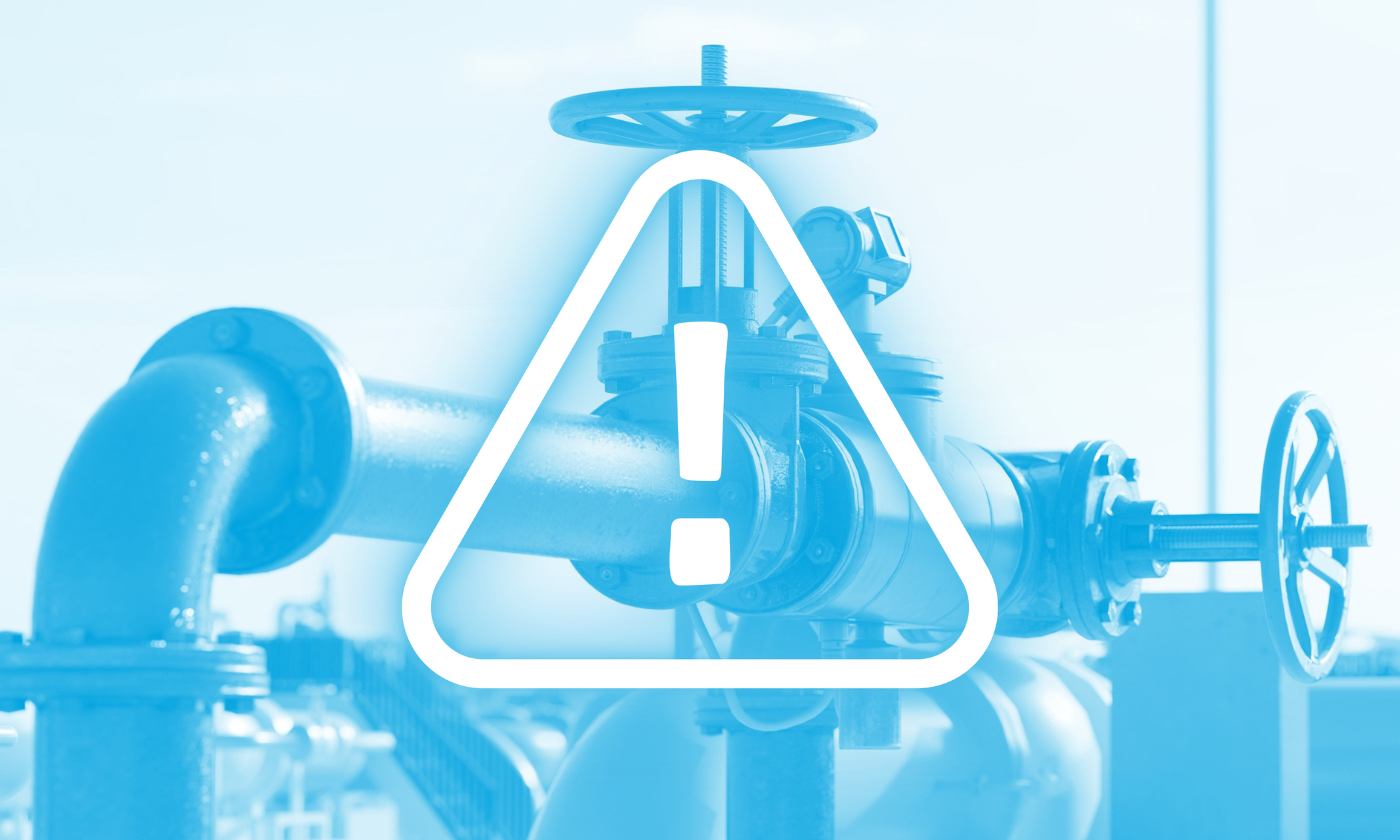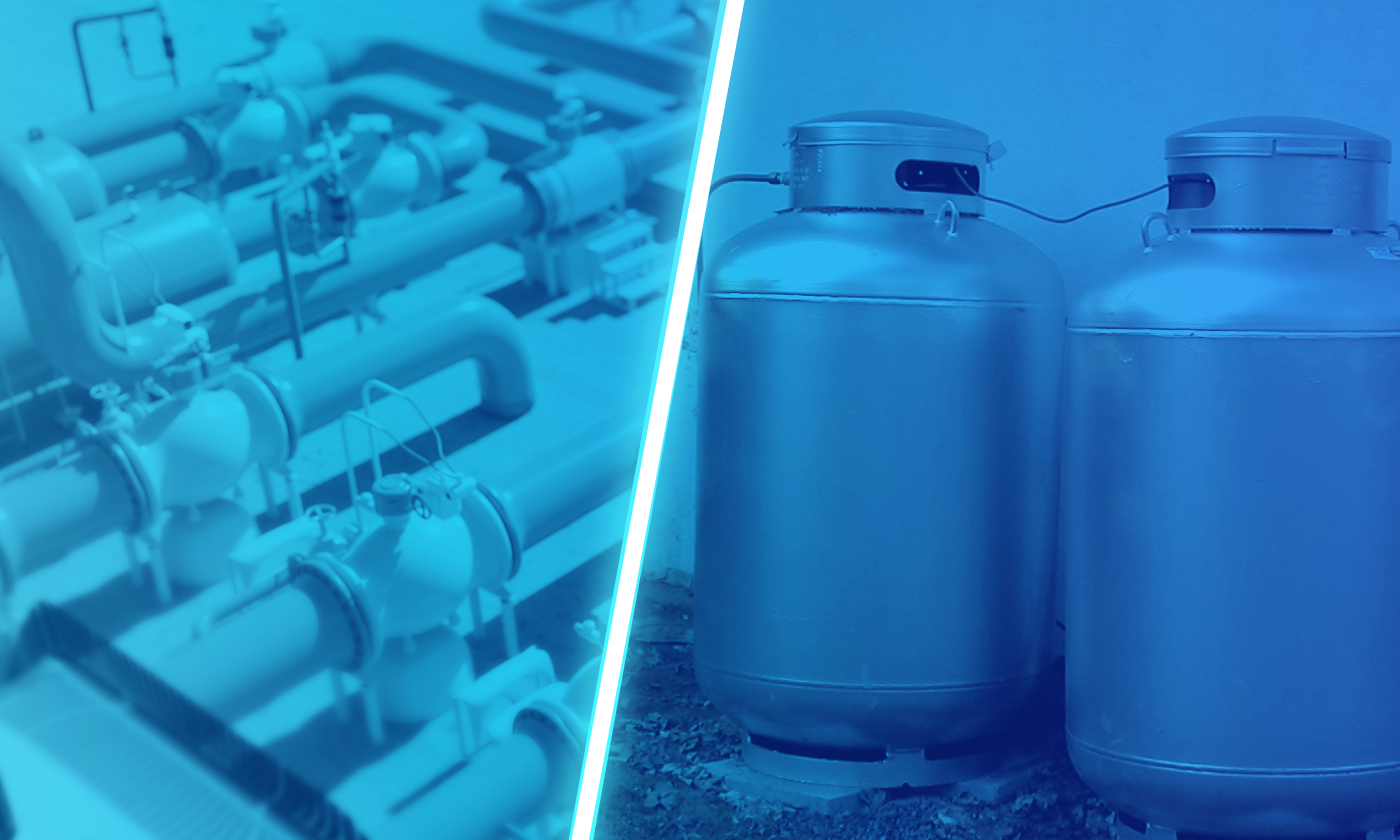According to the American Gas Association, US natural gas utilities invest $91 million daily, or $29.5 billion annually, on improving the safety of natural gas distribution and transmission systems.
However, gas distribution systems, including pipelines, storage tanks, and other components for reserves and transportation, are susceptible to wear and tear, leading to corrosion and future natural gas leaks. Detecting and addressing these leaks promptly, whether in your home or out in the workplace, is crucial to preventing accidents, minimizing environmental impact, and maintaining the reliability of the gas supply.
Let’s explore the challenges associated with natural gas leak detection in aging infrastructure and delve into innovative solutions that can effectively mitigate these challenges.
Understanding the Challenges
Many factors contribute to the weakened state of natural gas infrastructure. To make better, more-informed decisions for effective solutions, we must first understand the obstacles that impede the upgrade of America’s gas systems.
Age-Related Deterioration
One of the primary challenges in aging infrastructure is the inevitable deterioration of materials over time. Many natural gas pipelines in the United States were installed several decades ago and are now reaching the end of their intended lifespan. As with most materials, pipelines and other gas-carrying assets age and break down.
Additionally, without proper maintenance and constant use, this infrastructure is exposed to various factors such as corrosion, erosion, and material fatigue. These processes can weaken the longevity of the infrastructure, making it more susceptible to natural gas leaks.
Lack of Structural Integrity Data
In many cases, aging infrastructure lacks comprehensive structural integrity data, which is critical for reinforcing natural gas safety. Without accurate and up-to-date information about the condition of the pipelines and associated components, it becomes challenging to identify potential weak points and areas prone to leakage.
Not to mention, pipeline age and certain materials, like cast and wrought iron, pose significant risk indicators that cannot be prioritized without the correct information. Prolonged damage or deterioration makes allocating resources effectively and preventing frequent failures and safety risks more challenging. This lack of data significantly hinders effective natural gas leak detection and prevention efforts.
High False Alarm Rates
Traditional natural gas leak detection systems often suffer from high false alarm rates, which can be costly and inefficient. Harsh non-food chemicals such as disinfectant spray, aerosol hairspray, furniture polish, etc., can mistakenly trigger natural gas detectors, causing unnecessary apprehension and confusion.
False alarms not only waste resources but also lead to complacency among operators, making it harder to distinguish real leaks from false positives. This challenge necessitates the development of more accurate and reliable leak detection technologies.
Monitoring Large-Scale Networks
Gas distribution networks include complex underground pipeline labyrinths that cover vast geographic areas and are extensive. Monitoring such large-scale networks for potential leaks is an intricate task. It requires more resources for repair and maintenance and advanced technologies and strategies that provide comprehensive coverage, reliable detection, and rapid response capabilities.
Innovative Solutions
To overcome the challenges associated with gas leak detection in aging infrastructure, the industry has witnessed the emergence of several innovative solutions. These solutions leverage innovative technologies and data-driven approaches to enhance the efficiency and effectiveness of detection efforts.
Continuous Monitoring Systems
Continuous monitoring systems are revolutionizing gas leak detection by providing real-time data on the condition and integrity of pipelines. These systems utilize strategically placed sensors along the infrastructure, allowing for prompt identification and response to natural gas leaks and reducing the risk of catastrophic consequences. Collecting and analyzing data in real time enables proactive remedial actions.
Advanced Sensor Technologies
Advancements in sensor technologies have significantly improved the accuracy and sensitivity of gas leak detection systems. New sensors can detect even the smallest natural gas leaks or subtle changes in pressure, temperature, and flow rate. This enables early identification and mitigation of potential hazards. Additionally, these sensors can provide precise location data, aiding in efficient repairs and maintenance.
Data Analytics and AI
The integration of data analytics and artificial intelligence (AI) algorithms has transformed gas leak detection. By leveraging large volumes of data collected from sensors, AI-powered systems can detect patterns, anomalies, and potential leaks with exceptional accuracy. According to the National Association of Regulatory Utility Commissioners, AI can help identify and prioritize repairs, reduce operational and maintenance costs, and prevent natural gas leaks in infrastructure by predicting which pipeline is preparing to break down.
These intelligent systems can learn from historical data, adapt to changing conditions, and continuously improve leak detection capabilities.
Robotic Inspections
In addition to AI, robotic technologies are being employed to conduct inspections of aging infrastructure, offering a safer and more efficient alternative to manual inspections. These robots can navigate through pipelines, storage tanks, and other confined spaces to assess the condition of the infrastructure and identify potential leaks. They are equipped with sensors and imaging devices that provide detailed visual data for analysis and decision-making.
Predictive Maintenance
Predictive maintenance techniques are gaining prominence in gas leak detection. By analyzing data from various sources, including sensors, historical records, and maintenance logs, predictive algorithms can identify potential failure points and predict the likelihood of leaks. This proactive approach allows operators to prioritize maintenance activities, reducing downtime and optimizing resource allocation.
Benefits of Early Gas Leak Detection
Early detection of natural gas leaks offers several benefits. Firstly, it allows for timely repairs, reducing the risk of accidents and minimizing the impact on public safety. Secondly, it helps reduce methane emissions, contributing to climate change mitigation efforts. Lastly, early detection enables utilities to optimize their maintenance schedules, leading to cost savings and improved operational efficiency.
Natural gas detectors are critical tools for early detection efforts. Ensure one is always present in the areas where natural gas is used and invest in portable detectors.
Regulations and Standards for Gas Leak Detection
Regulatory bodies and industry standards play a crucial role in ensuring the effective detection and mitigation of natural gas leaks. These regulations define guidelines for leak detection programs, inspection frequencies, and response times. Compliance with these standards is essential to maintain the integrity of gas distribution systems and protect public safety.
Training and Education for Gas Leak Detection
Proper training and education are vital for personnel involved in gas leak detection. Operators and technicians should receive comprehensive training on the use of natural gas detection equipment, result interpretation, and safe handling procedures. Ongoing education and professional development programs help keep the workforce updated with the latest advancements in gas leak detection technologies for extensive knowledge about natural gas safety best practices.
Conclusion
Natural gas leak detection in aging infrastructure presents unique challenges that require innovative solutions to ensure safety and operational efficiency. By leveraging continuous monitoring systems, advanced sensors, data analytics, AI, robotic inspections, and predictive maintenance techniques, the industry can overcome these challenges effectively.
Embracing these technologies and practices inside the home and in the workplace will enhance the detection and mitigation of gas leaks and contribute to the longevity and reliability of gas distribution systems. As the industry continues to evolve, the focus on proactive natural gas leak detection and preventive measures will play a vital role in maintaining the integrity of aging infrastructure for years to come.
As we continue to rely on natural gas, we must stay safe and prepared for natural gas leaks. To learn more about gas leak detection and natural gas safety strategies, visit the Denova Detect natural gas safety blog and browse our selection of reliable battery-operated natural gas detectors.





Leave a comment
This site is protected by hCaptcha and the hCaptcha Privacy Policy and Terms of Service apply.